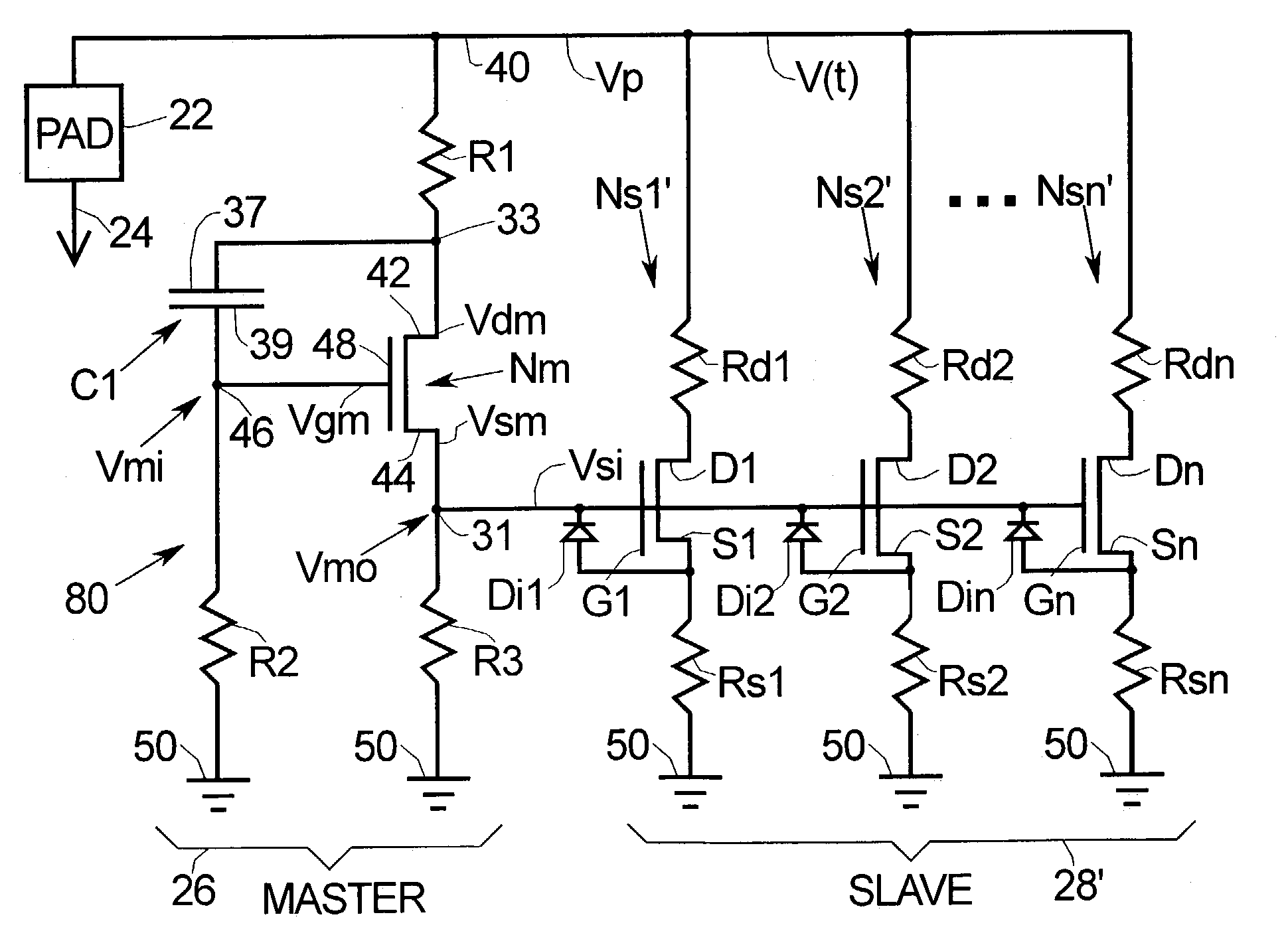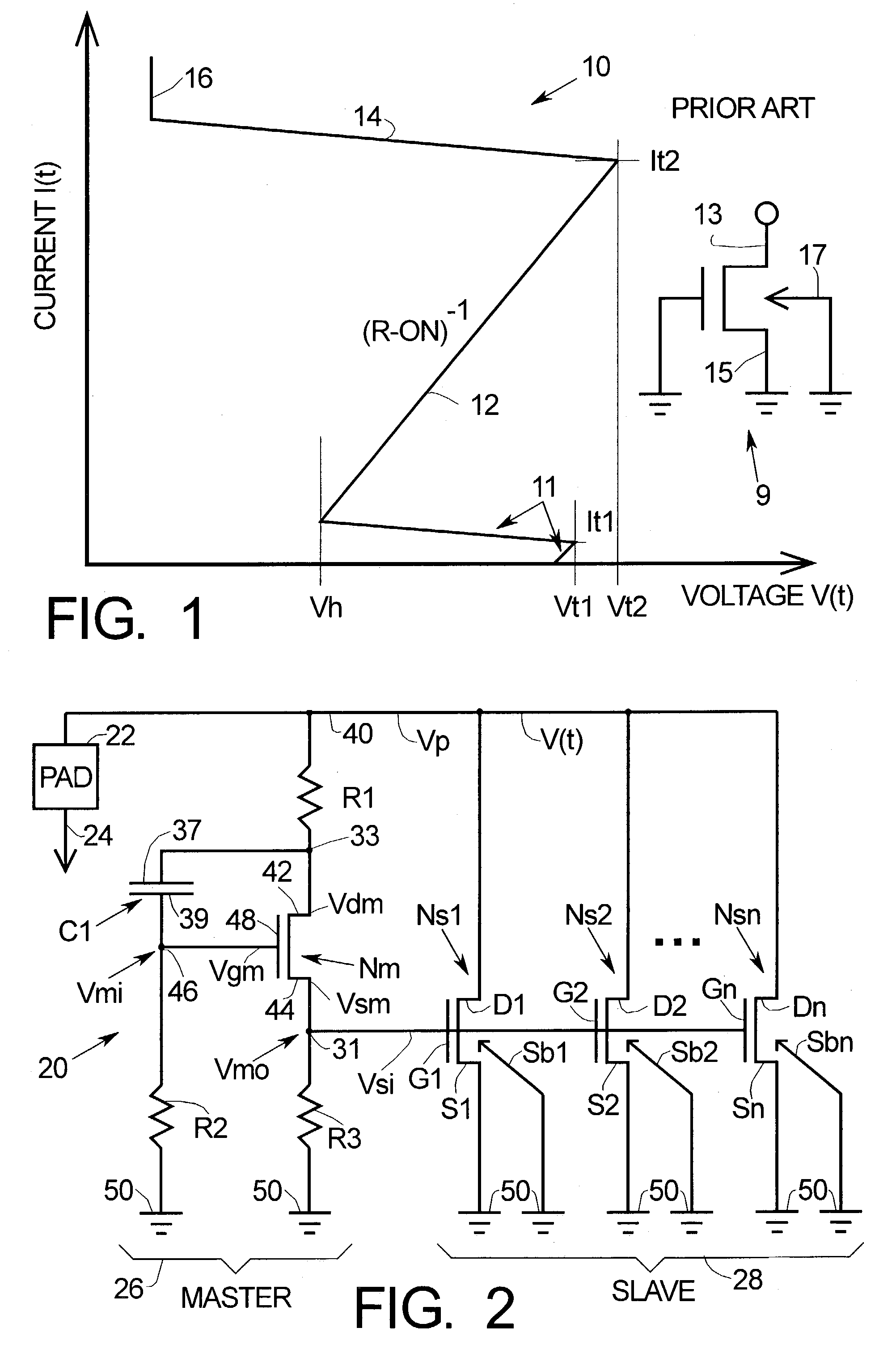Destructive electrical transient protection
a technology of destructive electrical transient and protection circuit, which is applied in the direction of emergency protective circuit arrangement, and emergency protective circuit arrangement for limiting excess voltage/current, etc., can solve the problems of master circuit and slave circuit desirably inactive during normal device operation, and shorten the time required to produce voltage vmo. , to achieve the effect of shortening the time required for voltage vmo, facilitating the design of esd protection, and increasing the overall robus
- Summary
- Abstract
- Description
- Claims
- Application Information
AI Technical Summary
Benefits of technology
Problems solved by technology
Method used
Image
Examples
Embodiment Construction
[0019]The following detailed description of the invention is merely exemplary in nature and is not intended to limit the invention or the application and uses of the invention. Furthermore, there is no intention to be bound by any theory presented in the preceding background of the invention or the following detailed description of the invention.
[0020]FIG. 2 is a simplified schematic diagram illustrating ESD protection circuit 20 according to the present invention. Protection circuit 20 is coupled to bonding pad or other IC node 22, and to other portions of the IC as indicated by arrow 24. Circuit 20 comprises master circuit 26 coupled to slave circuit 28. Master circuit 26 comprises NMOS transistor Nm, Resistor R1, resistor R2, resistor R3 and capacitor C1. Resistor R1 is coupled between pad 22 and node 33, which is coupled to drain contact 42 of transistor Nm and to lead 37 of capacitor 38. Resistor R2 is coupled between node 46 and ground or other reference level 50. Node 46 is i...
PUM
 Login to View More
Login to View More Abstract
Description
Claims
Application Information
 Login to View More
Login to View More - R&D
- Intellectual Property
- Life Sciences
- Materials
- Tech Scout
- Unparalleled Data Quality
- Higher Quality Content
- 60% Fewer Hallucinations
Browse by: Latest US Patents, China's latest patents, Technical Efficacy Thesaurus, Application Domain, Technology Topic, Popular Technical Reports.
© 2025 PatSnap. All rights reserved.Legal|Privacy policy|Modern Slavery Act Transparency Statement|Sitemap|About US| Contact US: help@patsnap.com



